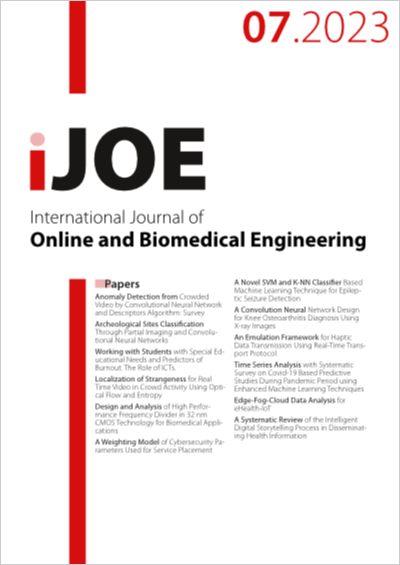Archeological Sites Classification Through Partial Imaging and Convolutional Neural Networks
DOI:
https://doi.org/10.3991/ijoe.v19i07.39045Keywords:
Archeological Sites Classification, Deep Learning, Fine tuning, Partial RecognitionAbstract
In this paper, a novel approach for classifying archeological sites using publicly available images through the use of Convolutional Neural Networks (CNNs) is presented. To surmount the problem of having a limited amount of data to use in training and testing the CNNs, our approach employs the technique of fine tuning. We conducted an experiment with four popular CNN architectures: VGG-16, VGG-19, ResNet50, and InceptionV3. The results show that our models achieved an impressive accuracy of up to 98% using the VGG-16 and InceptionV3 models and up to 97% using the ResNet50 model, while the VGG-19 model produced results with an accuracy of 95%. The results of this study demonstrate the effectiveness of our proposed approach in classifying archeological sites using publicly available images and highlight the potential of deep learning techniques for archeological site classification.
Downloads
Published
How to Cite
Issue
Section
License
Copyright (c) 2023 Yaser Saleh, Muhanna Muhanna

This work is licensed under a Creative Commons Attribution 4.0 International License.



